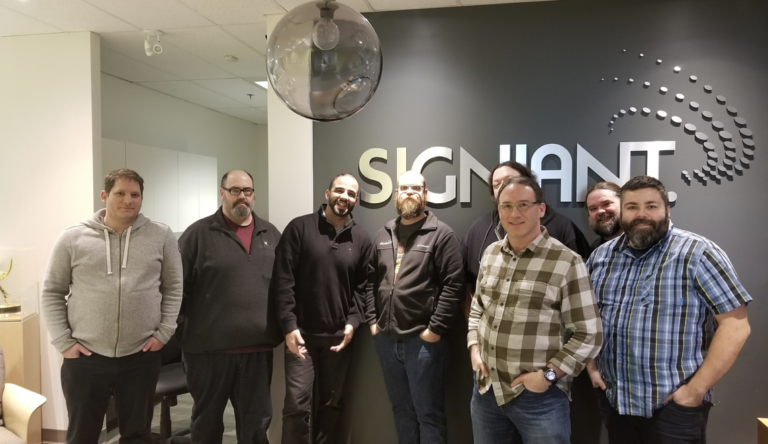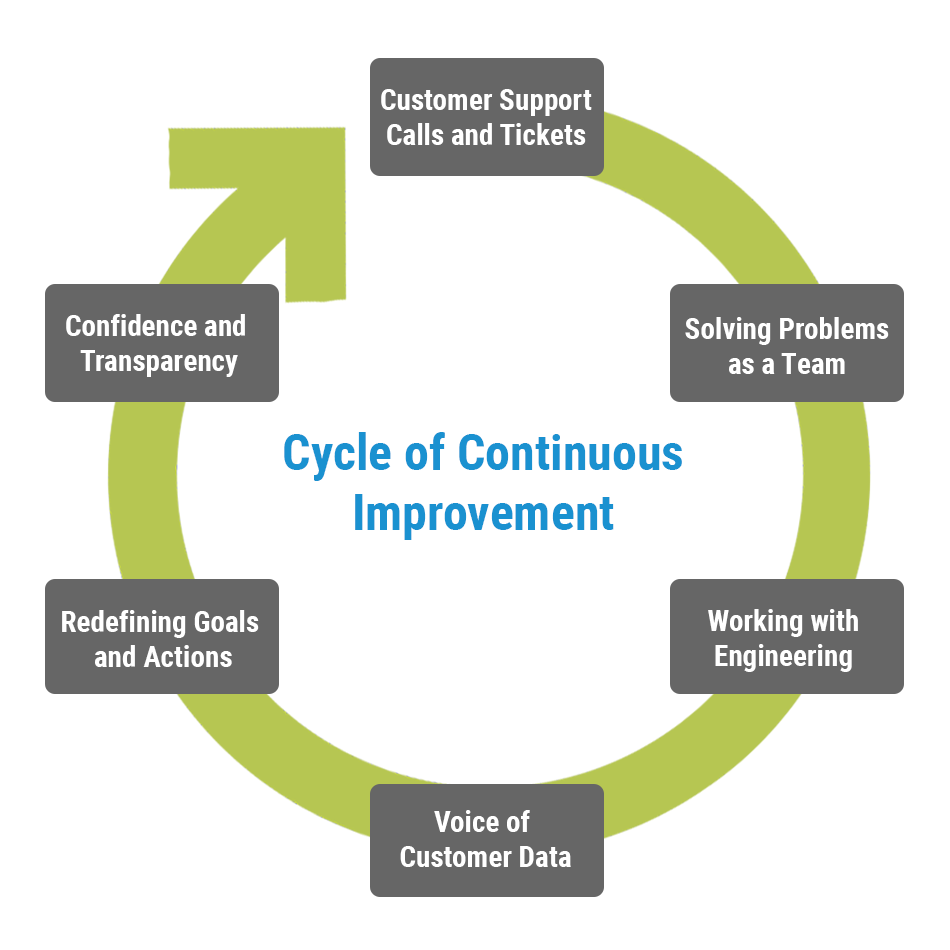The Secret to Signiant Customer Support’s 95% Net Promoter Score
When Jad Abdul-Rahim joined Signiant a decade ago as a technical support engineer, the customer support team functioned quite different from today. Among all of the transformations Signiant has gone through since embracing SaaS in 2012, the support team’s role within the company has perhaps changed the most.
“Transitioning to SaaS means changing the entire way you go about developing and supporting software,” explains Mike Nash, Signiant’s Director of Product Management. “It’s really all about getting feedback and utilizing it to continuously improve your product. One of the primary sources of feedback comes from customer support.”
Traditionally, support teams occupy a somewhat dark corner, siloed away from most of the company or even outsourced and completely isolated. They are, after all, the ones who deal with customer issues, so some business leaders don’t want them influencing company culture too much. Looking back, our transition to SaaS elevated the role of customer support in ways we couldn’t have anticipated, triggering a positive feedback loop in our products and throughout Signiant.
Building a cycle of continuous improvement
Signiant’s support team earned a 95 Net Promoter Score (defined in the “Voice of Customer Data” section below) for 2018, something we all strive to learn from. According to Jad, who is now Signiant’s Director of Sustaining Engineering and Technical Support, it’s all about attitude.
“I think the attitude of the support team is why we have such a high Net Promoter Score,” says Jad. “We always want to hear our customers’ feedback. We appreciate the good and react to the bad, and that’s how we continue to improve.”
However, getting to a 95 Net Promoter Score took work. And it started well before the launch of Signiant’s first SaaS product, Media Shuttle, in 2012.
Customer Support Calls and Tickets
Moving to SaaS meant two things for the support team initially. “As we were transitioning our team to support SaaS products, we understood that our customer base was going to grow and we would be dealing with regular release cycles,” says Jad.
More customers and more regular releases means a higher volume of support tickets and calls. The support team took several steps initially to streamline their response time and ensure every customer’s technical issue was addressed:
- Launch an all-in-one online customer support tool on support.sigiant.com where customers can open tickets, review articles, watch training videos and generally self-serve support. The support site is easily found in the header of signiant.com.
- Improve internal systems to ensure efficiency in call routing and handling.
- Implement a 24×5 tiered support model to efficiently handle all customer calls and tickets.
Solving Problems as a Team
A big factor in the support team’s success is effective internal collaboration, sharing and supporting each when needed, so that everyone on the team learns from each issue and expertise is shared across the team. Fostered by an open office concept, the team hears all of the conversations their coworkers are having with customers.
“We ensure that there are no barriers to internal support and sharing, so that everybody is basically on the same page,” says Jad. “We need open communication so that we can handle the rapid releases and changes within a SaaS product.”
This positive team environment extends to customers. “We do our best to personalize our support, most of our customers know the support crew by name,” says Jad. “Our goal is to deliver world class customer experience with every customer contact.”
Working with Engineering
The open concept environment of Signiant’s offices also supports effective collaboration with the engineering team. “We are co-located with the engineering team, allowing for simple and seamless cross department collaboration and escalations.”
The support team not only reports technical issues encountered by individual customers, they also provide feedback based on pattern tracking to the product team. “We track patterns within tickets that customers open in order to provide feedback to product management, so that they’re aware of any areas for improvement.”

Signiant’s Customer Support Team (Jad, pictured third from left)
Voice of Customer Data
A recent SuperOffice benchmark report showed that “while 80% of businesses believe they provide excellent customer service, in fact only 8% of customers believe they are actually receiving excellent service.”
A suggested remedy to that delusion is to implement a research strategy to discover what your customers really think, often called Voice of Customer (VOC) data.
A core part of VOC data gathering is calculating an annual Net Promoter Score, which involves asking one simple question to every customer that submits a ticket to support and calculating a score for the year.
“On a scale of 0 – 10, how satisfied were you with the resolution we provided today?”
The results are categorized:
- Promoters (9-10): People who are highly satisfied with your product or service and rave about you.
- Passives (7-8): People who are content with being a customer of your business, but don’t love you.
- Detractors (0-6): People who are not happy with your product or service and have had a negative experience.
A company’s Net Promoter Score is the percentage of “promoters” among the total survey results. For 2018, Signiant surveyed 156 customers and got a 95% Net Promoter Score (148 Promoters, 8 Passives, and no Detractors). The survey gives the support team another opportunity to interact with customers and fix any issues.
“In past years, we have gotten one or two detractors, which we take seriously and review each one as a team. We follow up with the customer to understand what we could have done better.” says Jad.
“And, even though it doesn’t change the score for that year, it ensures that we to learn from the feedback and continuously improve our customer experience.”
Redefining Goals and Actions
All of this leads to a retrospective period for revisiting goals and making sure they are aligned as a team.
From reviewing the support team’s basic Service Level Agreement (SLA) to improving the support site and ticket response process, Jad and team are committed to redefining goals based on customer feedback and aligning their practices with them.
Confidence and Transparency
A funny thing happens when you stop trying to pretend like you’re perfect, in life and as a company: You get to see how useful you really are to other people. Embracing customer support as a responsibility throughout your company is one of the best ways to do that.
“We understand that we may not be able to make everyone happy all the time, and it’s true that people mostly call us when they have issues,” says Jad. “But we also get to see first-hand how mission critical our products are for so many people. It’s real motivating to be part of their success story.”



